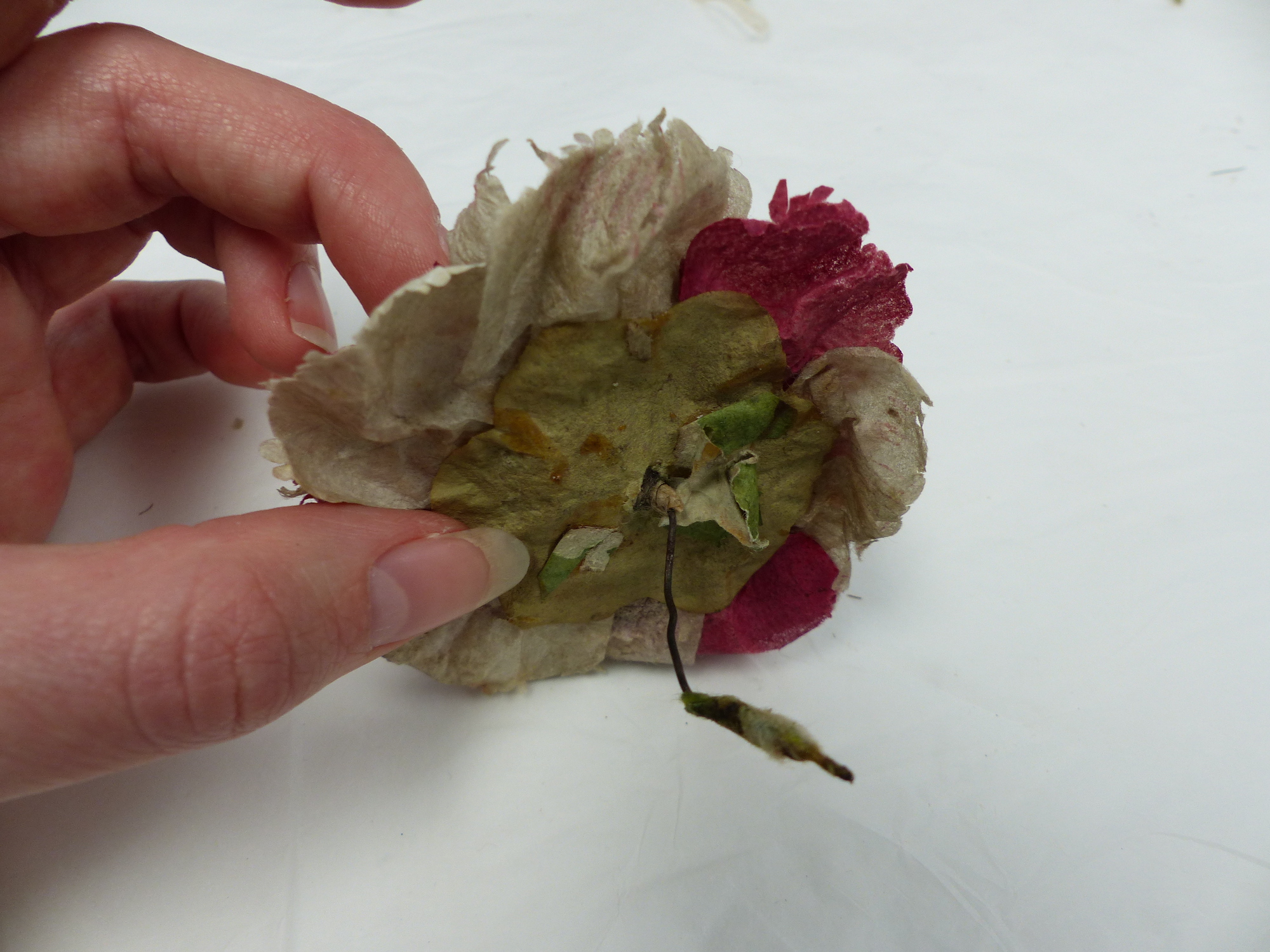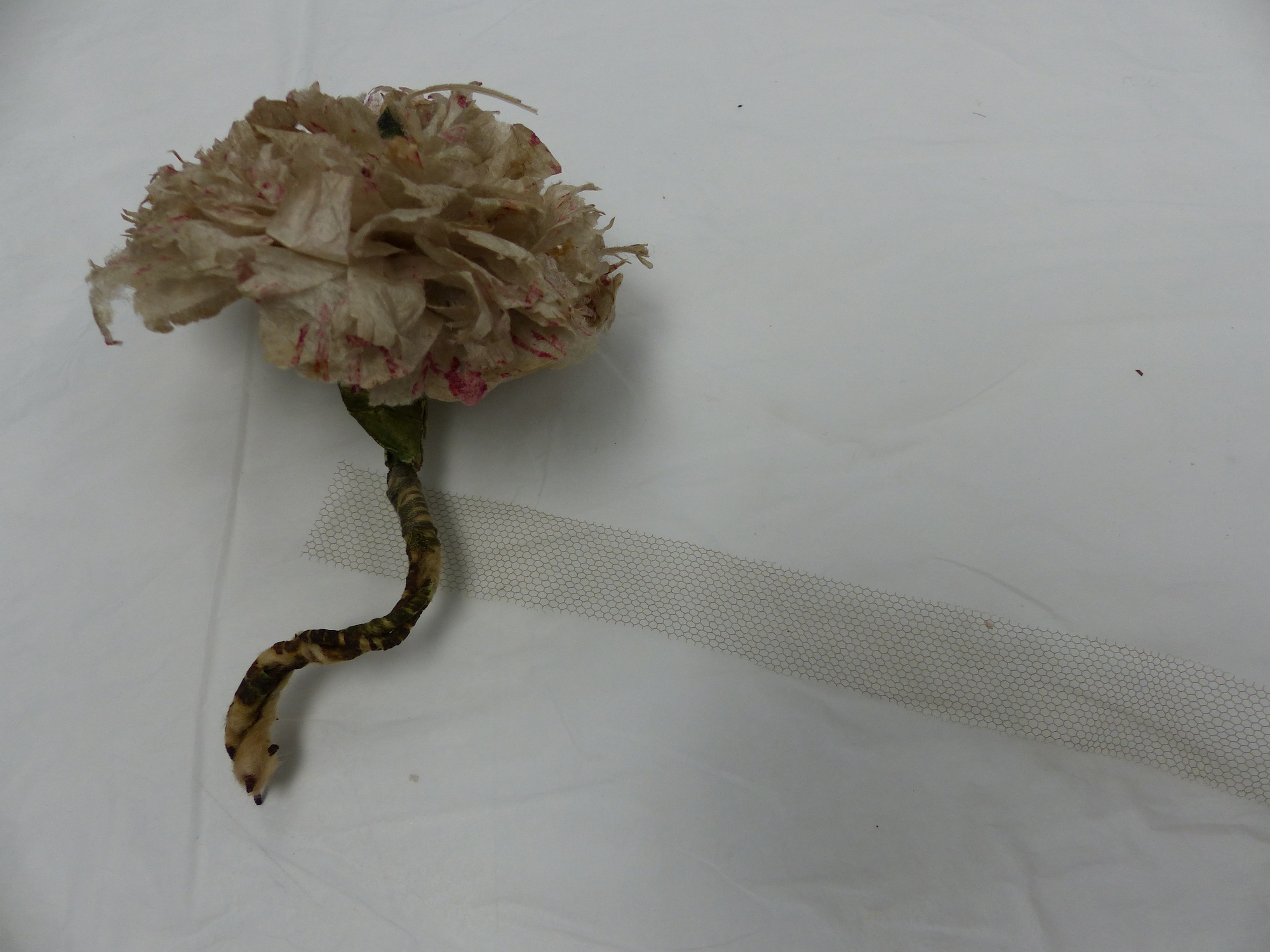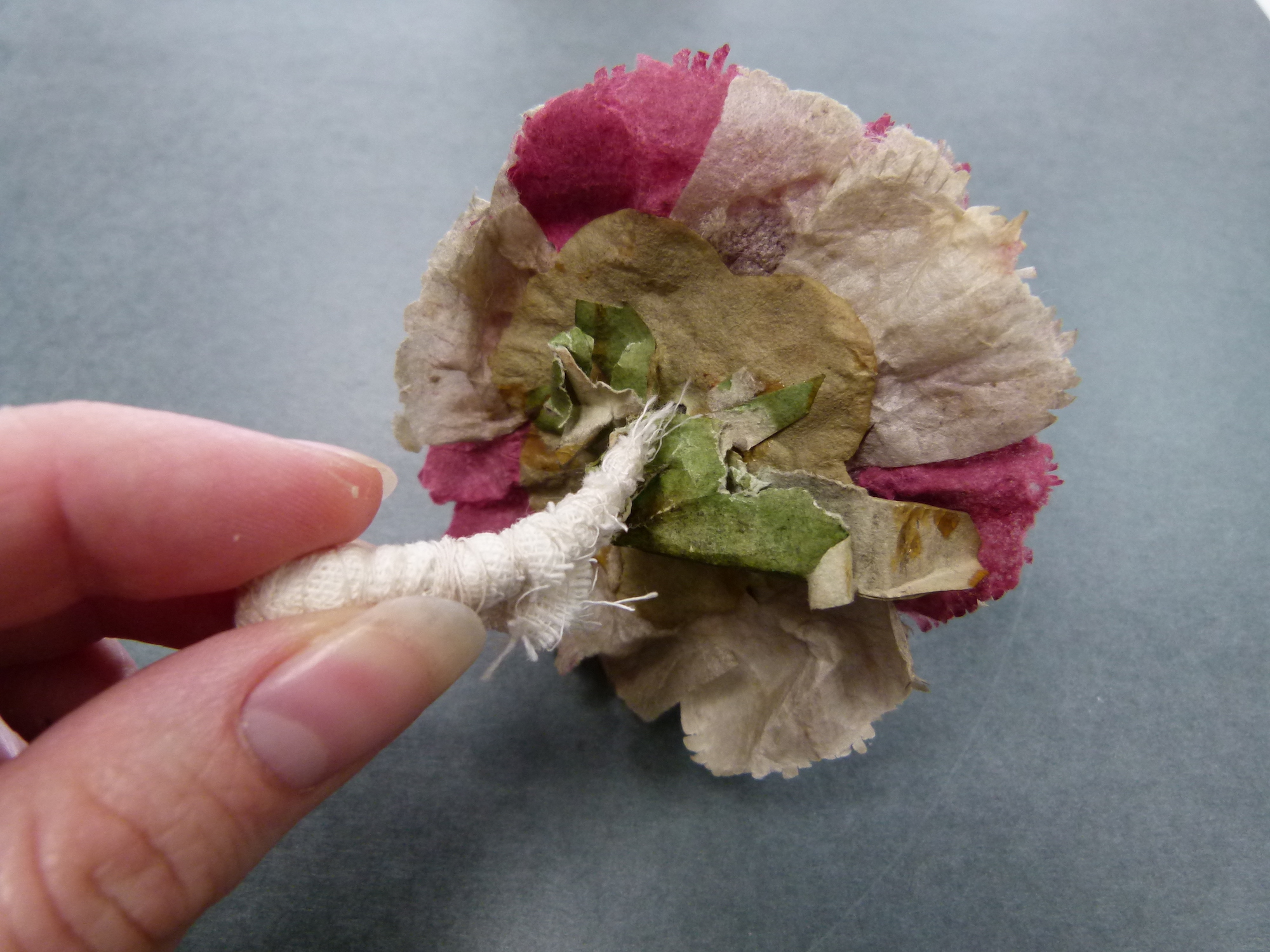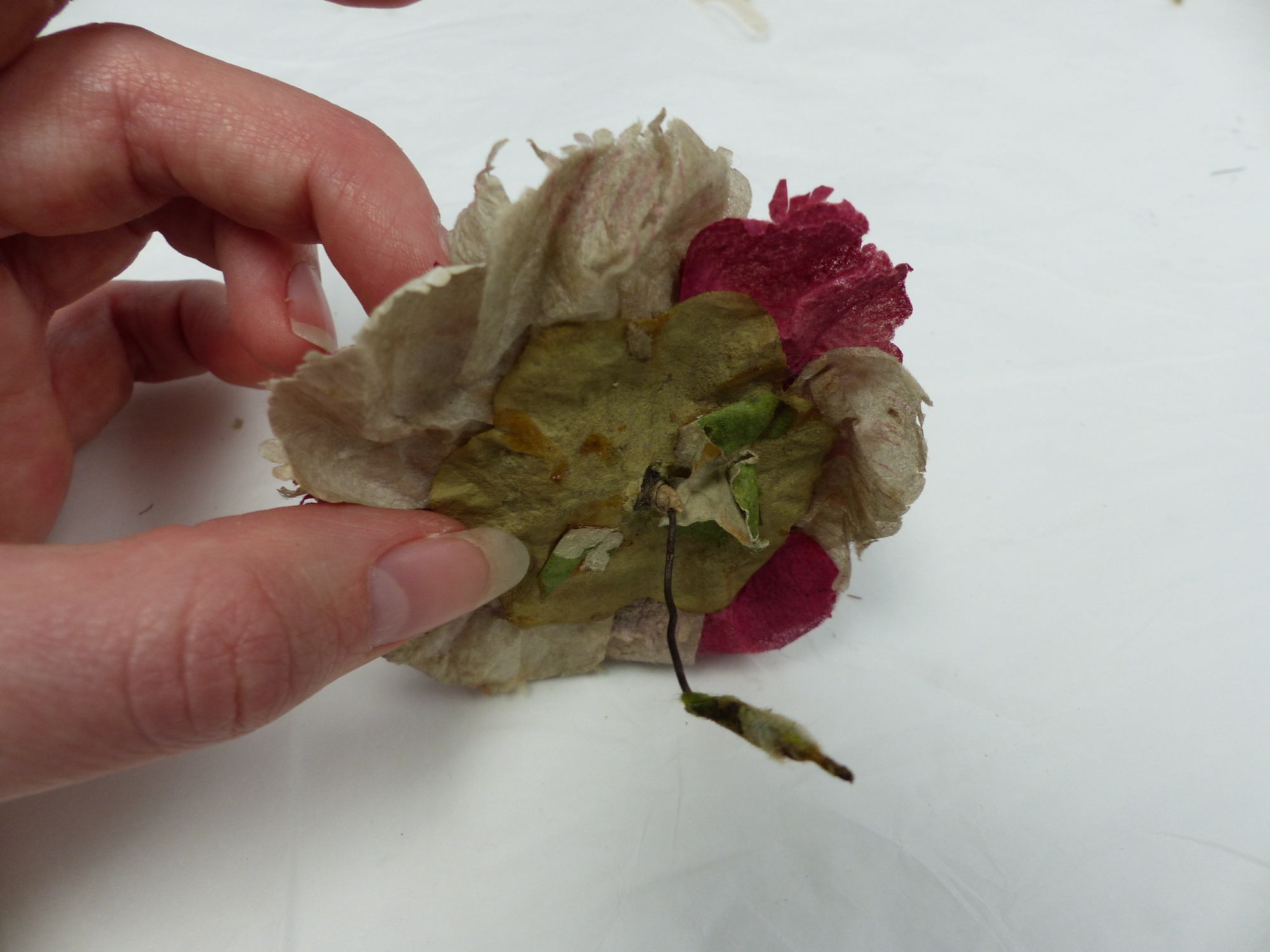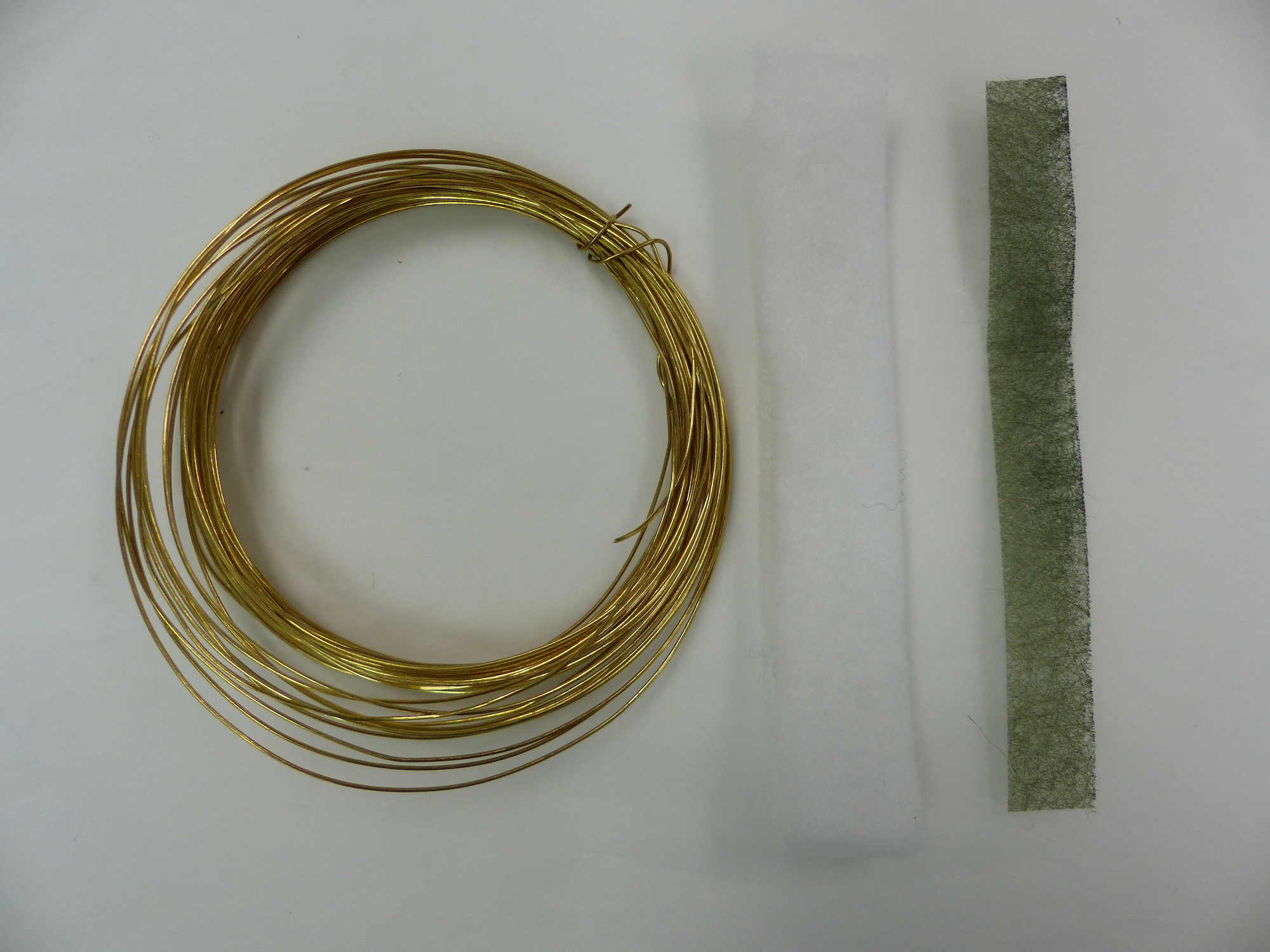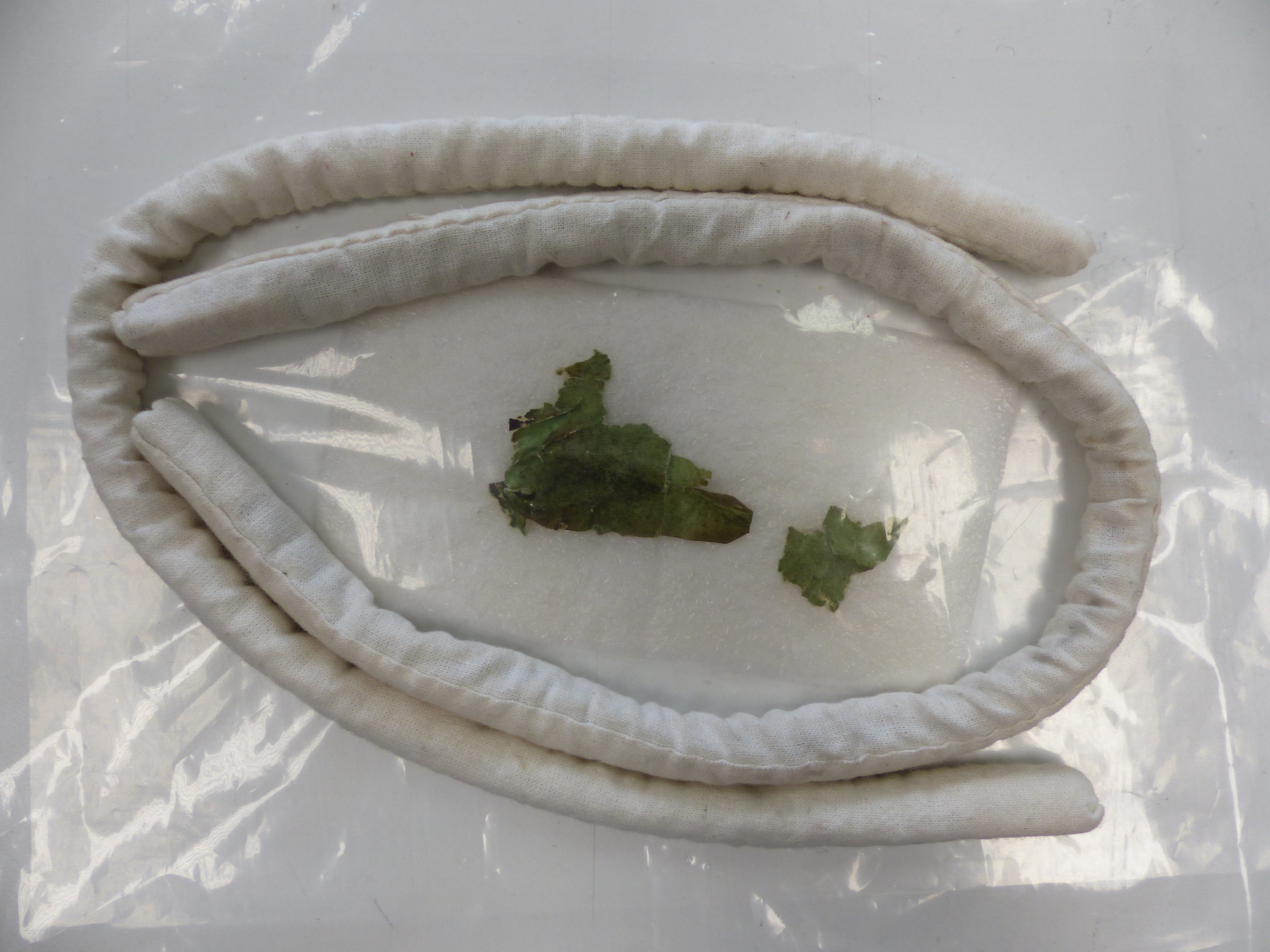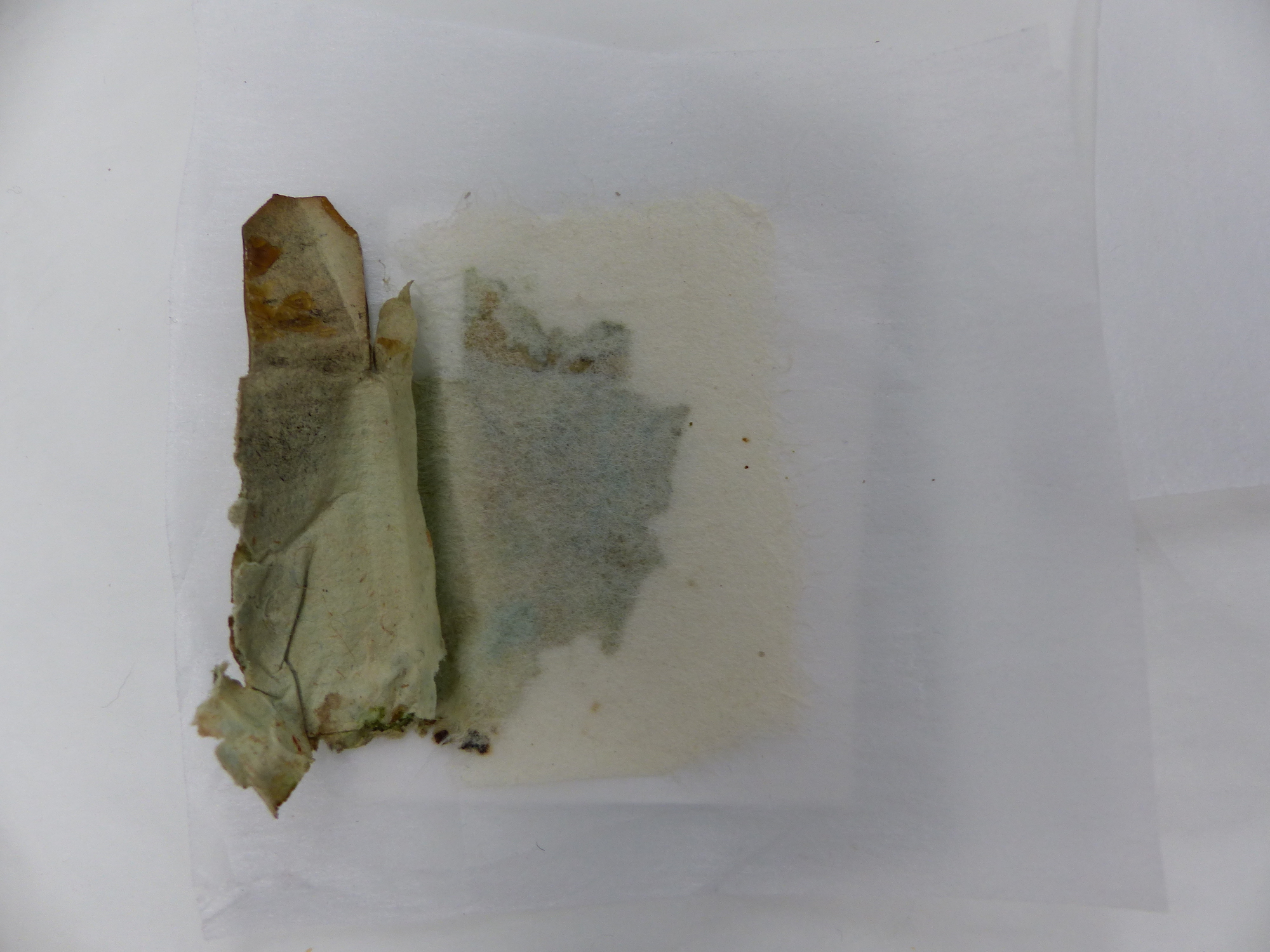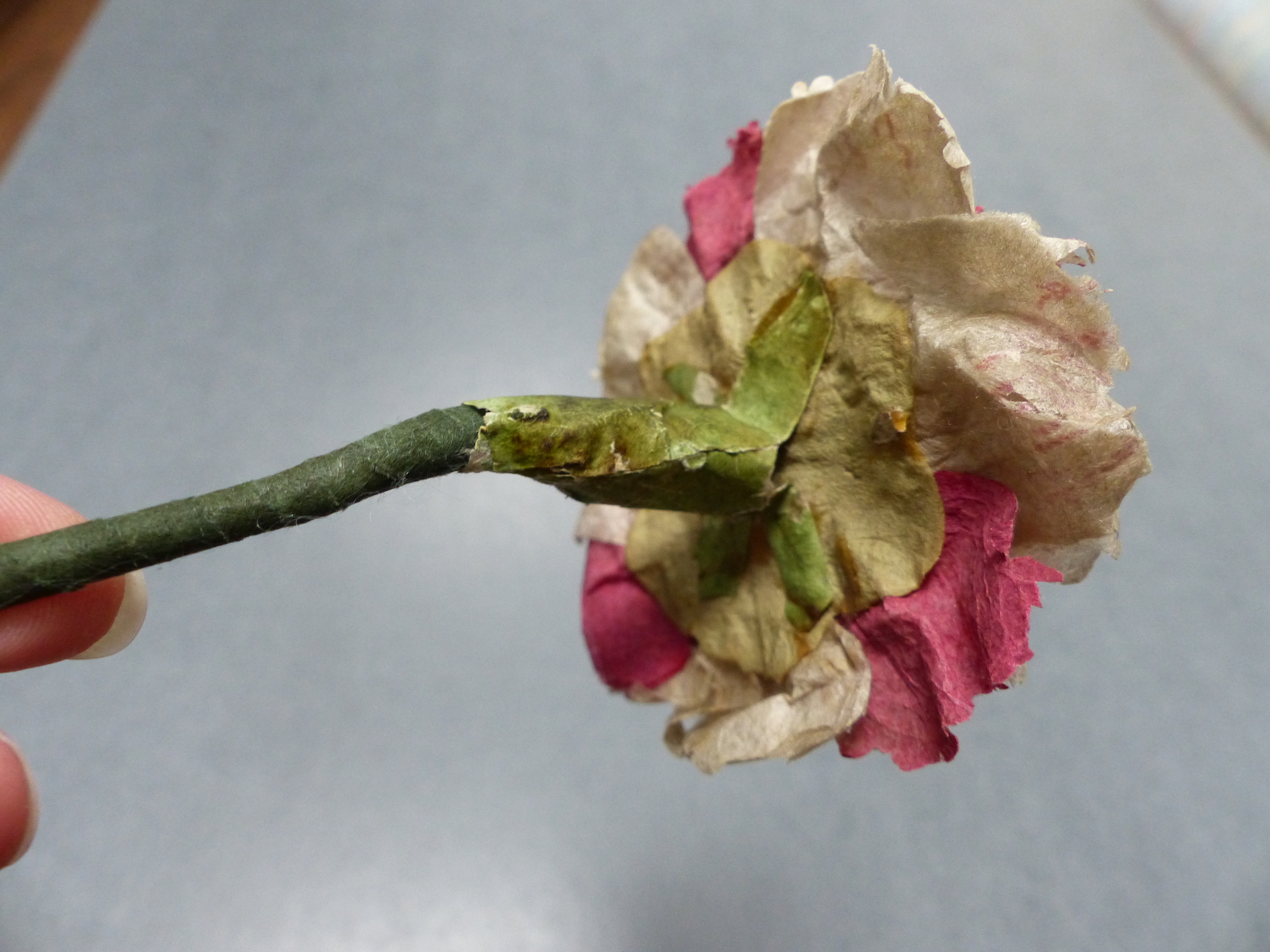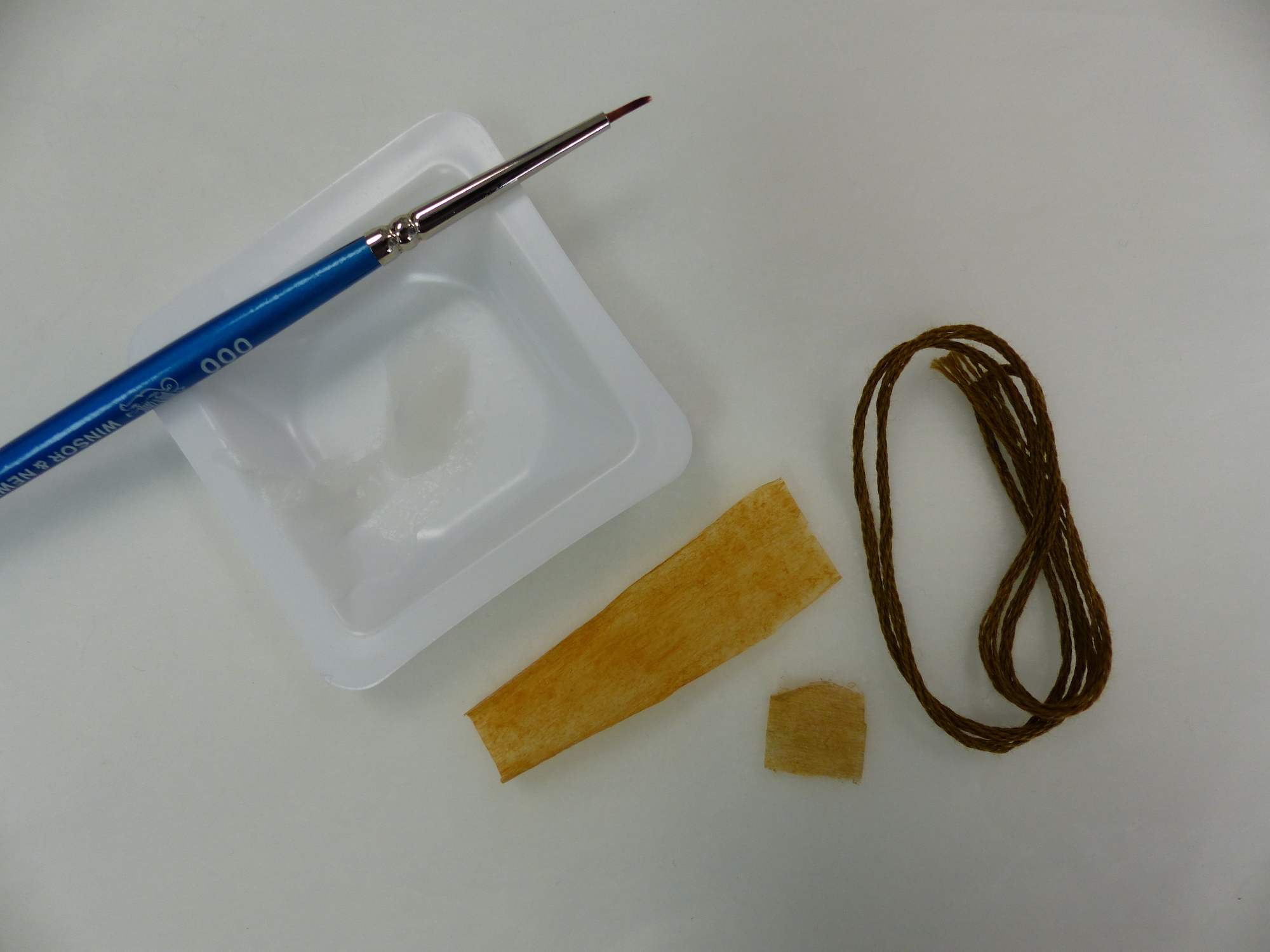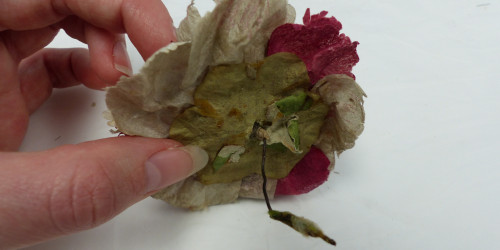
What you need to conserve artificial flowers?
The leaves of the carnations are made of very fine paper and are in a delicate condition. They were gently vacuum cleaned using a soft brush to lift the dust and soil. On one of the carnations, only fragments of the paper strips once wrapped around the stem were left. To protect the original materials and strengthen the stem, the stem was covered with a strip of dyed Nylon net of a matching colour. The nylon net strip was wrapped snugly around the stem and both ends were stitched in place using fine polyester thread.
The other carnation was in a worse structural condition with its stem almost completely missing, a broken and badly misshapen detached receptacle and only fragments of sepals left. The modern cotton bandage wrapped around the stem was removed and the remains of the original stem were revealed.
It was decided to recreate a longer stem to help hold the flower safely in place when back on display. In deciding how to recreate the stem, the structure of another carnation’s stem was used for guidance but modern conservation quality materials were used.
Two pieces of brass wire (ø 0,6mm) were twisted firmly around the remaining stem and further around themselves. The stem was covered using a strip of polyfelt and then a strip of polyester Reemay 19gsm painted with acrylic paints mixed to a sympathetic colour.
The pieces of receptacle were gently humidified and flattened using a Sympatex poultice method to make the repair necessary more possible. The receptacle was then repaired using Japanese tissue and Bookbinder’s starch and further humidified back into its original shape.
The receptacle was adhered in place taking care to match the remains of broken sepals together.
A terminal leaflet of the rose’s leaf was detached and the leaf itself was only loosely held in place. The detached leaflet was gently humidified using a Sympatex poultice and then a small tear in the leaflet was repaired using painted Japanese tissue and starch. The leaf was adhered in place using a splint of painted Japanese tissue. The Japanese tissue was painted with acrylic to match the colour of the leaf. The poorly attached leaves were bound more firmly using stranded cotton thread.
Maybe you have noticed that the veins of the rose’s leaflet that I have reattached go in the wrong direction? On the other hand the toothed leaf margins seem to be matched correctly and seem to be similar on other leaflets. The end leaflet of the other leaf is similar. I have to admit that there was a confusing moment afterwards when I thought I had got it wrong!
And after conserving these wonderful 18th century flowers you start to see flowers everywhere, for example in contemporary paintings.
More about the Flower making museum: http://www.martin-enterprises.eu/shirley.html
A great blog post about artificial flower making during Victorian and Edwardian periods: https://www.museumoflondon.org.uk/discover/lost-art-flower-making
More prints and articles (in French) from Diderot’s Encyclopédie (1756): http://www.encyclopédie.eu/index.php/component/content/article?id=915194564:FLEURISTE
More lovely details of paintings: https://www.instagram.com/charlottedicarcaci
Mira Karttila
